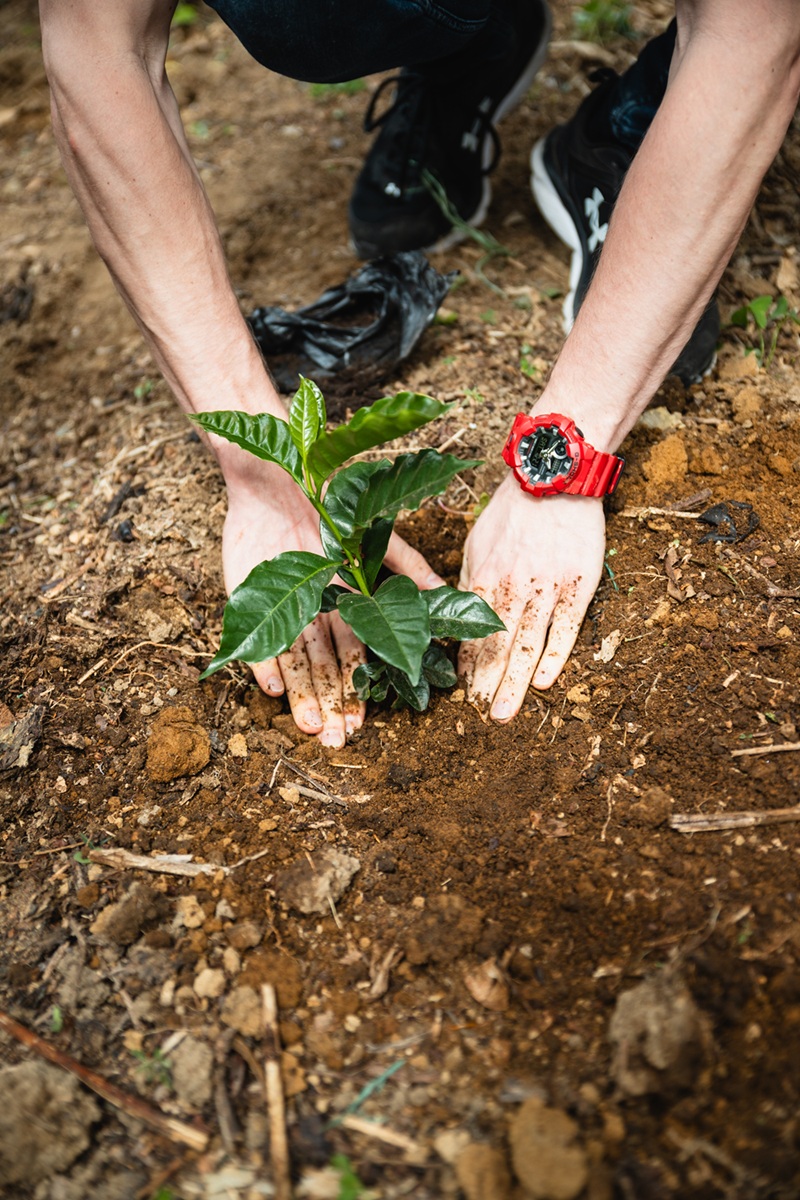Defining a Sustainable Coffee Industry
(By Autumn Skinner)
Why is sustainability important in the coffee trade?
Like every other commodity, coffee is a product that can either flourish or wither based on the crop’s environment. Being sustainable means thinking long-term and with the world’s natural resources in mind. Past the farming, there’s roasting, production, packaging and shipping to keep in mind from 25 million coffee producers in over 70 countries in the world.
At Chronicle, we realize all stages of the coffee’s farm-to-cup life cycle matter in sustainability, and we think it’s important for everyone, consumers and businesses, to understand:
The main pillars of sustainability in coffee are social, economic and environmental.
Environment
Climate change is arguably the greatest threat to coffee’s sustainability. Environmental sustainability is the crucial first step toward keeping coffee on shelves and in cups. Climate change, deforestation, droughts and plant diseases are all making the future of coffee hazy and bleak.
Coffee grows in very specific natural habitats, so rising temperatures and increased rainfall due to climate change can make coffee impossible to grow in environments where it once thrived. The demand for coffee is projected to triple by 2050 — that’s only 30 years away! Coffee is already on the endangered species list since 60% of the varietals (including arabica) are currently at risk of extinction.
Economics
Like the flavor profile of coffee, working conditions vary drastically by origin. Though the industry has come a long way from its slavery origins, economic sustainability is still a work in progress for many farms, regions and countries. In many cases, a lack of effective government, corruption, social upheaval and broken infrastructure can contribute to poor labor conditions.
Paying a higher price for coffee guarantees a greater share of return. Supporting the farmer by helping with credit access, technical assistance or reaching new markets builds greater economic opportunities. Paying coffee farm workers a liveable wage means contributing to their economy and in turn, contributing to our economy. The quality of your coffee can depend on the quality of life for the people who cultivate it.
Social
Much like the fashion industry, the coffee industry continues to confront forced labor, human trafficking and child labor around the world. Organizations like the Specialty Coffee Association (SCA), National Coffee Association (NCA) and the International Coffee Organization (ICO) are just a few non-profits leading the charge against these practices. Partnerships between farms and organizations like these are vital to building and maintaining social sustainability.
There are national and international agreements, alliances, conferences and summits committed to all sections of coffee sustainability. Born out of UN Paris climate meetings, the Sustainable Coffee Challenge is a global effort of companies, governments, NGOs, research institutions and others working to make coffee the world’s first sustainable agricultural product. The security of the coffee supply chain depends on strong farming communities. Fair trading helps build rural infrastructure, which becomes the backbone of those communities.
Numerous Asian, African and Latin American countries depend on coffee as the driving force for their economies. Coffee plays a huge role socially in maintaining substantial rural employment and stable communities. Improving the living standards of coffee producers, especially small lot owners, is a priority for governments and companies alike.
How to Identify Sustainable Coffees
Though coffee brands may have their own high standards of trade, organic and sustainability efforts, not all companies or coffees are certified by regulated agencies with universal standards. Certifications can take years, cost a lot and can be hard to receive, so don’t discount a brand as unsustainable or uncaring just because they aren’t officially certified.
For a quick way to identify coffees that have gone through the rigors of certification, here are the most common sustainability seals to look for on your next bag of coffee:

USDA organic products have strict production and labeling requirements. Organic products must meet the following requirements:
- Produced without excluded methods, (e.g., genetic engineering, ionizing radiation, or sewage sludge).
- Produced using only federally allowed substances.
- Overseen by a USDA National Organic Program-authorized certifying agent, following all USDA organic regulations.

In order to become Rainforest Alliance certified, farms must meet criteria of the Rainforest Alliance Sustainable Agriculture Standard. The Standard encompasses all three pillars of sustainability—social, economic, and environmental. Rainforest Alliance Certified™ farms are audited annually to verify that farmers are complying with the Standard’s requirements, which require continual improvement. The Standard is built on these important principles of sustainable farming:
- Biodiversity conservation
- Improved livelihoods and human well-being
- Natural resource conservation
- Effective planning and farm management systems
Fair trade-certified coffee guarantees farmers a Minimum Price, which acts as a safety net when market prices drop. This gives Fairtrade coffee farmers the security that they will receive a price that covers their average costs of sustainable production.
When you see a product with the Fair Trade Certified™ seal, you can be sure it was made according to rigorous social, environmental, and economic standards. Fair Trade works closely on the ground with producers and certifies transactions between companies and their suppliers to ensure that the people making Fair Trade Certified goods work in safe conditions, protect the environment, build sustainable livelihoods and earn additional money to empower and uplift their communities.

Instead of clearing rainforests, Bird Friendly coffees grow underneath shade trees that sequester carbon, fight climate change and provide habitat for birds, including migratory species whose journeys can take them from the backyards of North America all the way to coffee farms in Latin America. While much of the world’s coffee drives habitat loss, Bird Friendly habitat flies above the rest by ensuring a combination of foliage cover, tree height and biodiversity proven to provide quality habitat for birds and other wildlife.
Certification standards cover everything from canopy height to insect biodiversity to protect the wildlife that lives where coffee is grown. Bird Friendly coffees are also certified organic, meaning they are grown without pesticides, which is better for people and for the planet. The certification also gives growers access to gourmet market price premiums, and the timber and fruit trees on shade coffee farms provide farmers with additional income.
—-
What can you do to contribute to a sustainable coffee industry? You’re doing it!
Educate yourself. Research coffee before you buy. Spread the word.
With those three steps you’re a responsible consumer educating yourself (through this blog post and other sources), researching a coffee brand or specific coffee and sharing via social media and word of mouth when you find that great brand or bag of coffee, so others can support a business with sustainable practices.
Sources:
https://www.sustaincoffee.org
https://www.ncausa.org/Sustainability
http://www.ico.org/sustaindev_e.asp
https://scanews.coffee/2014/03/08/sustainability-sustainable-coffee-and-meaningful-economic-benefit
https://www.cnn.com/2019/01/16/health/coffee-species-extinction-climate-study-trnd/index.html




